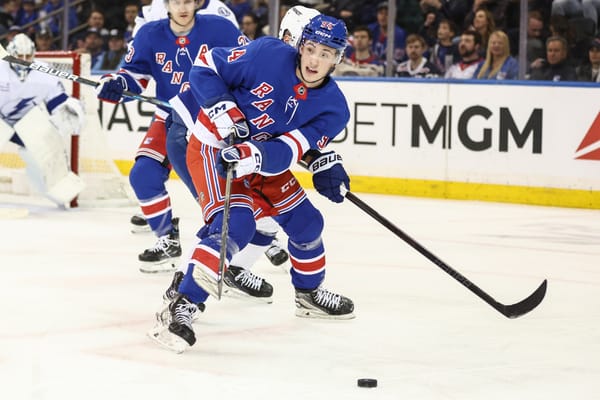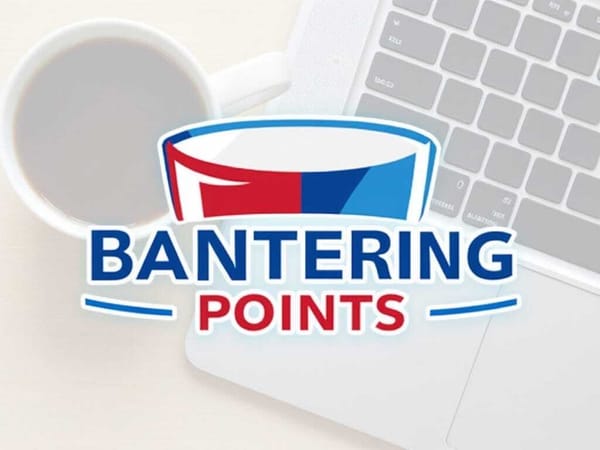There’s No Choice Now But To Go With The Kids
The path forward is clear
Now that Ryan Strome and Brendan Lemieux are signed, it looks like the New York Rangers “To-Do List” for the offseason is complete. And, excluding the NHL Draft and the addition of Alexis Lafrenière, it’s been pretty underwhelming. Henrik Lundqvist, Jesper Fast, Marc Staal, and several spare parts are gone and the biggest addition to the team is Jack Johnson. If nothing else, that’s a lot of experience out the door.
It also means that one of the youngest teams from the 2019-20 season just got even younger. And that is definitely a good thing. Blueshirt Banter’s Adam Herman offered his take on the Rangers offseason decisions about a month ago. Here’s an excerpt from that piece:
“The Rangers were an exciting but incredibly flawed team last season that needed Herculean contributions from its top players and goaltenders in order to mask a toothless bottom-six and the worst team defense in the league well enough to hang around the playoff race.”
The 2019-20 Rangers also played Fast with Panarin, and were also led by a 33-year-old Marc Staal in average shorthanded ice time (2:44). They leaned too heavily on established veterans while sheltering and/or burying young forwards like Kaapo Kakko (14:17 TOI/GP), Filip Chytil (14:50 TOI/GP), Brett Howden (13:09 TOI/GP) and Julien Gauthier (8:39 TOI/GP) in the lineup. You could also throw Lias Andersson into that mix.
That’s not to say that sheltering youngsters in the bottom-six isn’t a valid approach in both the short and long-term because it is. David Quinn has forgotten more about developing kids into hockey players than I’ll learn in my lifetime. But, with the exception of Adam Fox and maybe Ryan Lindgren, the Rangers were a team that asked little of its young skaters and expected Artemiy Panarin and Mika Zibanejad to drag the rest of the roster up the mountain.
Next season needs to be different. And with the departure of Staal, Fast, and Lundqvist, there are big roles to fill in the lineup and the locker room.
The Rangers could potentially have two of the top two picks from the last two drafts in the top six. That’s unbelievable. And while it’s true that Howden is already playing up against his ceiling, Gauthier has a tantalizing toolkit of size and speed that the coaching staff needs to harness and put to use. The same goes for Chytil’s undeniable skill. Strome’s role as Panarin’s center should not be a given just because he re-signed, it should be an open competition and the Rangers should plan on moving Strome and clearing the way for Chytil as soon as the 21-year-old looks ready.
The biggest red flag here — other than Quinn’s track record — is Jack Johnson. If Jacques Martin sees Johnson as a student teacher who can help the kids learn the art of the PK while playing on the third pair, we could be in store for some of the same headaches we endured in the latter years of Staal’s tenure.
JD said Jack Johnson was signed to help with the PK, plus Jacques Martin recommended him. Plus, it's not big money, and it's only one year.
— Colin Stephenson (@ColinSNewsday) October 12, 2020
Back in October, NHL.com’s Dan Rosen tried his hand at reassuring skeptical Rangers fans following the Johnson signing by claiming, “If Libor Hajek is better, he’ll play. If K’Andre Miller is better, he’ll play. If Matthew Robertson is better, he’ll play. If Yegor Rykov is better, he’ll play. But having Jack Johnson is good one-year insurance in case none of them are better or ready.”
Well, we’ll see. Rangers fans have a reason to be skeptical, because the organization doesn’t always use a meritocracy, and we’ve seen too many players a bit long in the tooth been given playing time they don’t deserve. Although it’s worth noting that Rykov may never make his Rangers debut now that he’s back in the KHL.
Big picture, the Rangers would be better off challenging and trusting the kids to shoulder the load. Sometimes it is better to have a kid fail, learn, fail again, and becomes something as opposed to deploying a known commodity that’s going to be a drain. There will be struggles, but at least there is light at the end of the tunnel, as opposed to the alternative which is an ‘abyss-ive’ blackhole. That means giving them plenty of leash. That means letting them — and, potentially, the team — falter, fail, rinse, and repeat.
If Miller, Kakko, Lafrenière, or other kids go through growing pains that result in a losing a record, then so be it. You can’t do much growing without them. Because if all of this is going to work at all, they are going to have to play a role at some point. If not; “Houston, we have a problem.”
One way or another the Rangers will be entertaining next year. Hopefully, a big part of that entertainment will be the players who represent the future of the team stepping into larger roles and Lafrenière, Shesterkin, and Kakko convincing us that the best is yet to come.




